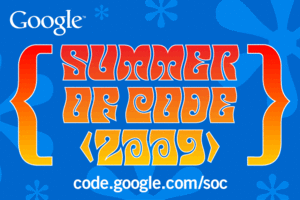It’s been quite a while, truth be told, quite some time without posting updates to this blog.
My GSoC project have been going through a mix being busy, many events happening, trying to find love for new things but I am sure my project is still interesting .
Today I want just to mention the status of my GSoC project ; it’s in the mid-term evaluation and we expect Google paying for all ‘well-going’ projects .
I have a detailed wiki page about my project : OpenMRS Sync, Create a new Sync Node .Everyone is welcome to leave useful comments on this project. The source code is available under the terms of OpenMRS Public Licence and can be browsed from OpenMRS website as well as they can be ‘checked-out'(downloaded) via subversion with the command
svn checkout http://svn.openmrs.org/openmrs/branches/data-synchronization-admin-ui
Other things actually are happening in my coding environment:I have been undergoing series of switching Operating Systems between Windows, Linux and Solaris and I have some insight about what does things in the best way; I have been trying to find love for Groovy/Grails at the same time I am trying the Qt toolkit .Groovy seems to be a powerfull Jav-based agile framework, easy to configure and deploy. Touching it is like drinking milk from your grandma, and when you get satisfied you feel and find that you have more energy . Qt is a cross-platform desktop GUI framework using C++and acquired by Nokia last year, Qt is the parent of KDE Desktop environment for Linux.Trying Qt is like eating bread from your granddad tagged with honey inside; you get stronger and healthier. The reality behind things like these(trying new things) should be :”Always, there is a place where you want to go, there is a person who you want to be with, there is something you always want to see happenning, there a level you always wish to be on, the is a goal you always want to achieve ! The list doesn’t end and when you feel you don’t have neither one of these desire, you don’t enjoy your life .” .
I the past 40 days, I have seen many other things happening around us and among them as I am writing: ATRACO club from Rwanda won the East-African soccer cup(CECAFA), Rwanda has named other new born gorillas (Kwitizina<www.kwitizina.org>: this is really a new brand for the Gorilla tourism in Rwanda, and it demonstrates the efforts deployed in both tourism promotion and conservation ) , Rwanda has celebrated 15 years after National Liberation and the end of Tutsis Jenocide <www.rwanda15.org>. An other event was the departurte of MJJ , the King of Pop, to the land of peace, and I can’t say anything more personal than “In paradisum deducant te Angeli; in tuo adventu suscipiant te martyres, et perducant te in civitatem sanctam Ierusalem. Chorus angelorum te suscipiat, et cum Lazaro quondam paupere æternam habeas requiem.“.
This is not the end, please stay turned to my blog and I love to hear your comments .
svn checkout http://svn.openmrs.org/openmrs/branches/data-synchronization-admin-ui

